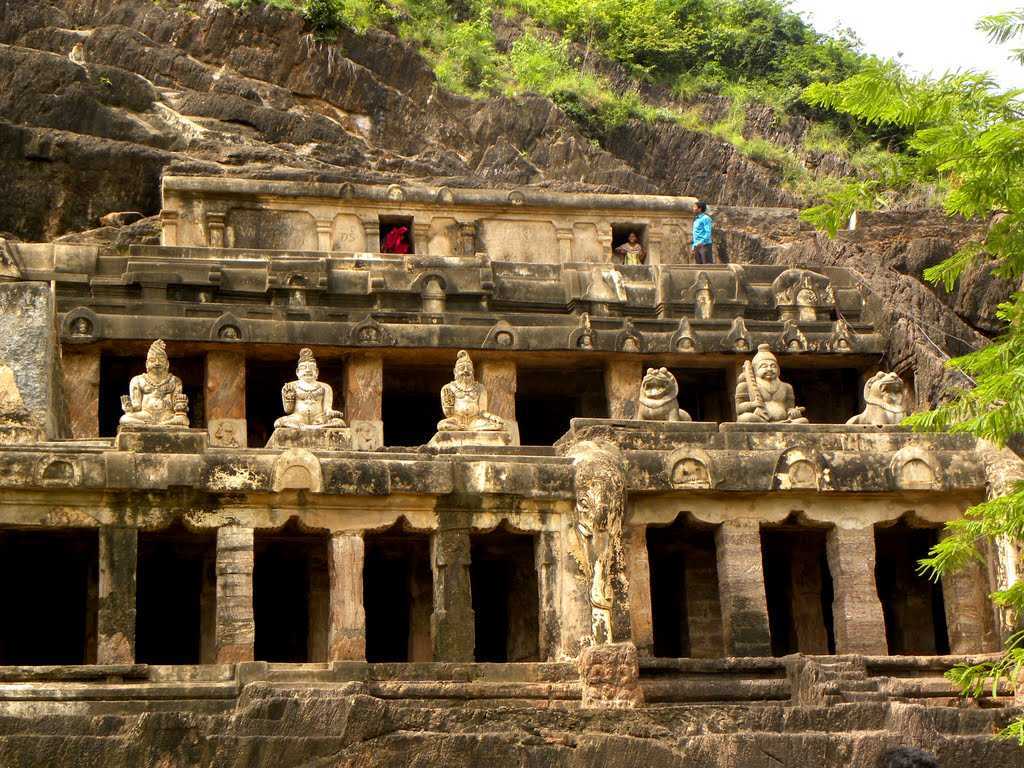Complete Guide about Kanaka Durga Temple
-
Location
Vijayawada Durga Devi temple GJ74+GQ6, Kanaka Durga Temple Steps Rd, Durga Agraharam, Mallikarjunapeta, Vijayawada, Andhra Pradesh 520001
-
Timings
Every Day
05:00 AM - 01:00 PM
05:00 PM - 09:00 PM
-
Entry Fee
Free Entry


Kanaka Durga Temple
About Kanaka Durga Temple
A well-known temple devoted to the Goddess Durga is the Kanaka Durga Temple. This magnificent structure was constructed in a Dravidian style and is situated in the Vijayawada district of Andhra Pradesh. On the banks of the Krishna River, the temple is surrounded by the Inrakeeladri hills. The temple is revered by devotees and followers and is mentioned in numerous sacred texts and Vedic literature as well. Every year, people come to this temple to express their reverence and devotion to the Supreme Goddess and ask for her blessings. The temple’s website allows visitors to make online reservations for darshans and volunteer opportunities and provides detailed timings and guidelines. A food donation programme is another one of the temple’s many charitable endeavours.
One of the many Shaktipeethas in the nation is the Kanaka Durga Temple in the state of Andhra Pradesh. In this image, the goddess can be seen in her Mahishasurmardini form alongside the dead demon king Mahishasura. The deity is thought to be Swayambhu, or self-manifested. Awe-inspiring and unforgettable, Kanakadurga’s imposing image. The name of the temple, Kanaka Durga, which means gold in Sanskrit, comes from the deity’s molten gold-colored face and body as well as the idol’s golden ornamentation.
Vaikom Mahadeva Temple Official website Link
www.vaikomtemple.org
The History of Durga Devi
The origin and history of the Devi Kanaka Durga temple are told in a number of different legends. According to a legend, this area was once covered in large rocks that prevented the Krishna River from flowing freely, making it uninhabitable. Lord Shiva was consulted to find a solution, and he instructed the hills to clear the way so that the river could flow freely. Through the tunnels, or “Bejjam,” the river’s flow increased, giving rise to the name Bezawada, which was later changed to Vijayawada.
Another legend holds that Arjuna prayed to Lord Shiva on the summit of Indrakeela Hill in order to obtain his blessings. According to the legend, Arjuna was successful in passing the test that Lord Shiva had set for him and as a result, Lord Shiva gave the middle Pandava the Pasupat weapon, giving rise to the name Vijayawada.
Obviously, the most well-known one features Goddess Durga in the middle. There are two variations. It stands to reason that the goddess would have travelled to the mountaintop on which the temple is located, where she was worshipped and known as by the sage Indrakila, who provided the idea for the name of the hill range. When the sage begged Durga to kill the demon king and make Indrakeeladri her permanent queen, she did so after being tormented by the growing threat of demons led by Mahishasura.
One more is that Devi Durga granted the Yaksha by the name of Keela the boon that she would live on in his heart forever. She gave him the boon, saying that when the time came, she would sit in the temple tucked inside the mountain range and he would be a mountain. She kept her word and settled down at Indrakeeladri after killing Mahishasura.
The Architecture
The main sanctum is built like a pyramid, and the surface is decorated with fine stone carvings. The golden crown that can be seen from a great distance is perhaps the most impressive feature of the Kanaka Durga Temple. Experience something soul-stirring by going here.
A Lord Shiva shrine known as the Malleswara Swamy temple is also located close to the grounds of the old temple. As opposed to the customary left-side seat for the female consort, this temple is likely the only one in the entire world where the female deity is situated next to the male deity.
This is significant because it demonstrates the dominance of Shakti, the feminine power of the cosmos. The main draw for anyone visiting the temple is undoubtedly these two shrines.
Dekho Apna Desh
The DAD of Tourism
Get Direction to Kanaka Durga Temple
Near Attractions





